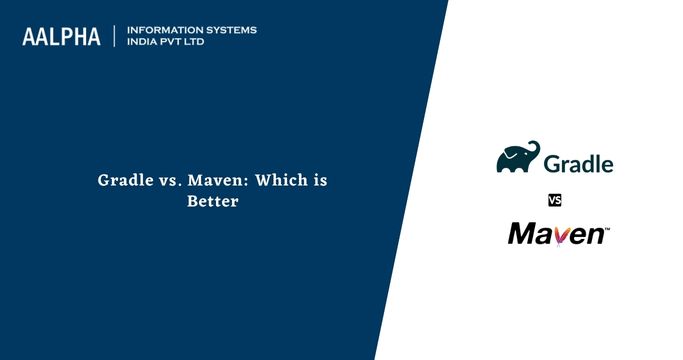Gradle is one of the Java development tools covered in the Comprehensive Java Developer’s Guide by Stackify, although it is not the only build automation tool to consider. Maven is an older and widely-used option; nonetheless, which build system is optimal for your project? With different technologies, such as Spring, enabling developers to select between the two systems, and a growing number of connectors, the choice is in your hands.
The scale of your project, your requirement for customization, and a few other factors might assist you in making a decision. Let’s have a peek.
What is Gradle: definition?
Gradle is an open-source build automation system that employs the same ideas as Apache Maven and Apache Ant. It employs a domain-specific language based on the computer language Groovy, distinguishing itself from Apache Maven, whose project setup utilizes XML. Using a directed acyclic network determines the execution order of tasks.
Many engineers designed Gradle in 2007. Version 3.4, which debuted in February 2017, is currently the most recent stable release. It enables the creation and deployment of Java, Scala, and Groovy applications, with other project procedures and languages to be added in the future.
What is Maven: definition?
Maven is used for Java-based project build automation. It facilitates the mapping of a software’s development and its many dependencies. It utilizes an XML file to explain the project you are constructing, the software’s dependencies on third-party modules and components, the build sequence, and any required plugins. There are predetermined goals for jobs like packing and compilation.
Maven will download libraries and plugins from various sources and then cache them on your local computer.
Gradle vs. Maven
There are critical distinctions between how the two system approaches construct. Gradle is built on a network of task dependencies, where tasks are the work-doing entities. With Maven, project stages are associated with objectives, which act similarly to Gradle’s tasks as “objects that perform the job.”
Gradle vs. Maven: Performance
Both enable concurrent execution of many modules builds in terms of performance. Gradle allows incremental builds since it determines which tasks have been modified. Other outstanding performance characteristics of Gradle include:
- Incremental compiles for Java classes
- Compile avoidance for Java
- APIs for incremental subtasks.
- A compiler daemon that significantly accelerates compilation.
Gradle vs. Maven: Dependencies features
Gradle and Maven can manage dynamic and transitive dependencies, leverage third-party dependency caches, and read POM metadata format regarding dependency management. In addition to declaring library versions through central versioning specifications, you may impose major versioning. Both fetch their artifact repositories’ transitive dependencies. Gradle has JCenter, whereas Maven has Maven Central, and you may even establish your private business repository.
On the other hand, Gradle is superior in terms of API and implementation requirements, as well as its inbuilt support for concurrent safe caching. It also stores repository information with cached dependencies, guaranteeing that two or more projects using the same cache do not overwrite each other.
Other dependency management features exclusive to Gradle include:
- Utilization of library substitution rules for compatibility
- Utilization of ReplacedBy rules
- Better metadata resolution
Gradle vs. Maven: Compatibility
Regarding execution models, both have task groups and descriptions. Both allow just the chosen project and its dependencies to construct. Gradle also supports task exclusions, transitive exclusions, and task dependency inference. Gradle includes additional sophisticated capabilities, such as task ordering and finalizers.
Gradle excels in administering build infrastructure because it employs wrappers that enable auto-provisioning, while Maven requires an extension to support self-provisioning builds. Gradle also allows the configuration of version-based build environments without requiring human design. In addition, it permits bespoke distributions.
How to Choose between Gradle and Maven
Both have their strengths and disadvantages.
- Customized model. You may quickly establish your project’s metadata and dependencies using Maven, but generating a highly customized build might be a headache for Maven users. The POM file may quickly get obese as your project expands, and it may become unreadable XML in the future.
- Management of dependencies and directory structure. Nevertheless, Maven enables simple but efficient dependency management, and since it has a directory structure for your projects, you have a standard layout for all of your projects. It utilizes a declarative XML file for its POM file and offers a multitude of plugins.
- Integrations and extensions. Maven also supports a broad range of build life cycle processes and smoothly interfaces with third-party tools, including CI servers, code coverage plugins, and artifact repository systems. In terms of plugins, the number of available plugins is increasing, and significant companies provide Gradle-compatible plugins. Nevertheless, there are more plugins available for Maven than for Gradle.
- Flexibility. Gradle is very flexible as compared to Maven and script-based. Gradle makes custom builds straightforward. Gradle is a relatively new tool. Thus the number of developers who are proficient with it may be restricted.
Wrapping Up
In the end, your choice will rely primarily on your requirements. Gradle is more effective. However, there are occasions when you do not need most of its features and functions. Gradle is optimal for larger projects, whereas Maven is ideal for smaller ones. It is feasible to transition from Maven to Gradle if you discover your project has outgrown Maven.
Connect with DevOps consulting company to know more about about gradle vs maven.
